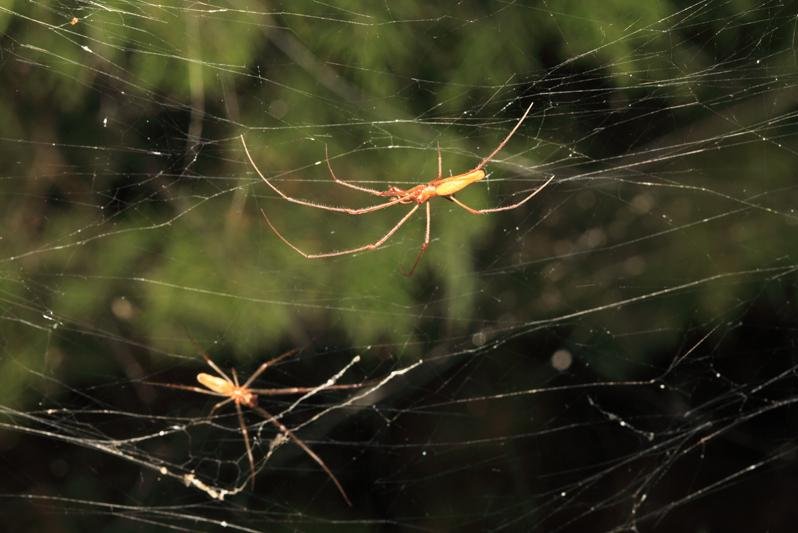1 of 2 | Spiders in a Dallas suburb have built a giant communal web. Photo by Texas A&M/Mike Merchant
DALLAS, Aug. 7 (UPI) -- If science has taught us anything, it's that spiders have a whole lot of tricks up their hairy legs.
They spy on their sexual competitors; they destroy the webs of their mates; and every once in a while, they build massive communal webs.
A number of early commuters in a Dallas suburb have recently learned that frightening fact, having spotted the sheen of giant silk shawls draped over trees and shrubbery, and filled with hungry spiders.
A massive web has been located in the North Texas neighborhood of Lakeside Park, stretching nearly the length of a football field and rising as high as 40 feet.
A similar web was found inside Lake Tawakoni State Park in 2007. The appearance of that web surprised many arachnologists, who had never seen or studied such a phenomenon.
Most spiders work alone, but these massive webs encompass hundreds of spiders -- seemingly working together. Scientists suggest the webs are strung in cooperation in order to take advantage of rare influxes of insects, a hatch of midges or other water-borne insects from the nearby lake.
The spiders responsible for the 2007 nest were confirmed to be member of the species Tetragnathus guatamalensis. The builders of the latest nest have yet to be identified, but experts suggest the architects are likely long-jawed spiders from the family Tetragnathidae. Regardless, scientists say there is no reason to be frightened -- amazement might be a more appropriate reaction.
"These types of spiders are unusual in that they are not aggressive to other spiders of the same species on the same web," Mike Merchant, Texas A&M AgriLife Extension Service urban entomologist in Dallas, said in a recent news release. "They also are not known to bite or be harmful to humans."
Merchant advises neighbors to let the spiders be; there's no need to call the exterminator, he says.
"Insecticides or other treatments are really unnecessary as this spider is essentially harmless and, although the communal nest may look spooky, they too are basically benign and are a sight more to be appreciated than feared," Merchant explained.
Roy Vogtsberger, an entomologist at Midwestern State University, has been studying the 2007 phenomenon in the years since it happened. He calls the rare a phenomenon a natural "art exhibit." An piece of art -- and a paean to teamwork.
"What is really interesting about these spider aggregations is the lack of aggression among spiders of the same species on the same web," said Vogtsberger. "They can be extremely close proximity [and still tolerate each other]."















